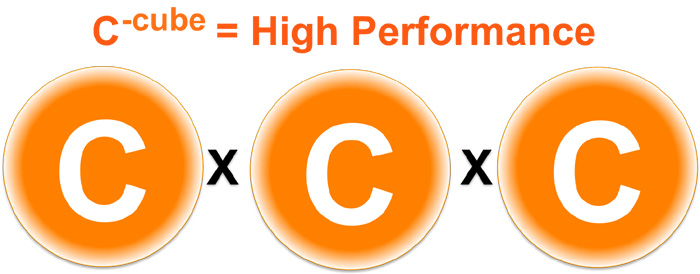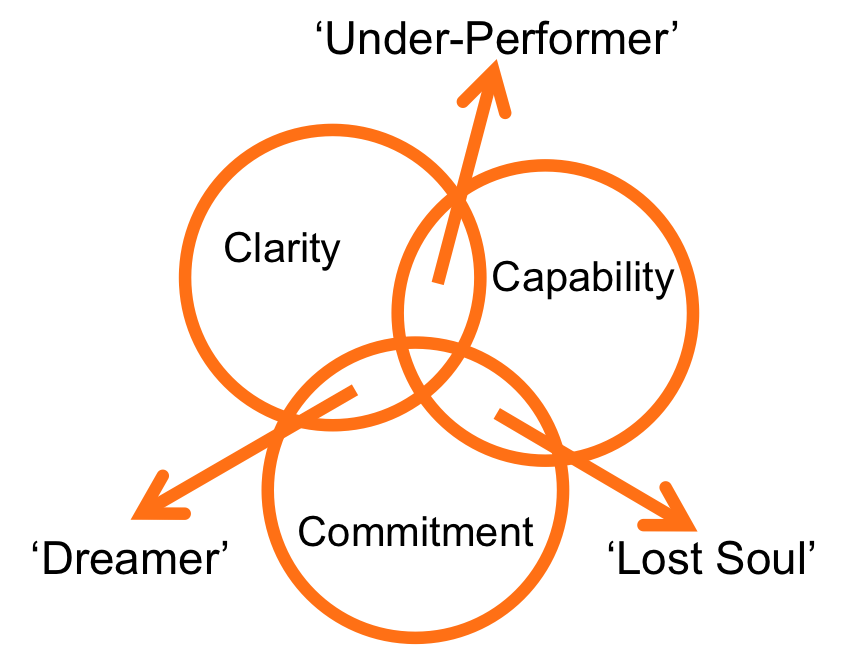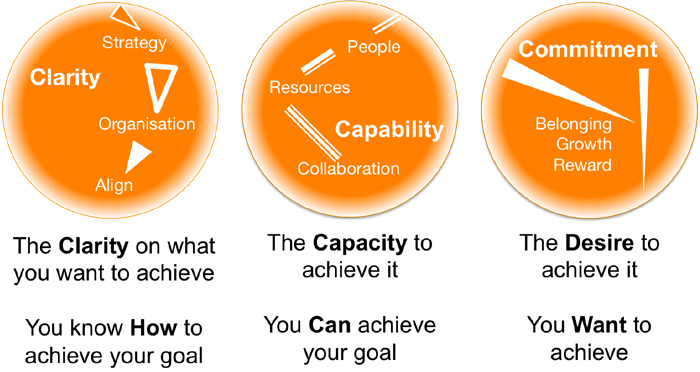One question people often ask me is: How do you create a high performing organisation in frontier markets? Obviously this is a million dollar question. There’s no single correct answer because every organisation, industry, business context and country is different. However having seen now successful and unsuccessful companies operate in a large number of frontier markets I’ve been able to distill a number of common characteristics from companies that are finding success.
After collating the information and comparing it with other high performance organization models I realized that the themes are very similar. All consultants and educators like to create models since they help clarify and build a better understanding of the services they provide. I couldn’t be left behind, so I created the C-cube Framework of High Performing Organisations in Frontier Markets.

Whenever I share this picture with CEO’s, leaders and managers and ask them what the 3C’s of high performance organisations are, I get the whole ‘C’ part of the dictionary thrown at me: Customer, Capacity, Coordination, Culture, Collaboration, Costs etc. Most of the time I get one or two right answers but surprisingly more often than not leaders are not able to articulate what a makes a high performing company.
Let me clear the mystery and share what the 3 C’s stand for:
1. Clarity: The clarity on what you want to achieve | You know how to achieve your goal
The starting point of every high performing organisation is that they’re clear on ‘why they exist, what they do and how they do it’. That gets translated into a clear plan on how to succeed, design of the organisation, processes and the governance framework that will be able to deliver.
One of the important and difficult components of the Clarity ‘C’ is to ensure that each and every member of the organisation from the CEO to the receptionist is able to explain the strategy through the grand-mother test. This involves simplifing the message, in this case company strategy, in such a way that your grand-mother will be able to understand it.
Every member of the company also needs to understand how her/his role contributes to the larger picture. The famous story of the janitor in Nasa in the 60’s comes to mind, where when asked why he was still working so late in the office he answered he was helping in putting a man on the moon.
2. Capability: The capacity to achieve it | You can achieve your goal
When you’re clear on the strategy the next step is having the capability to deliver it. This doesn’t only include having (cliche warning…) the right people in the right place but also ensuring people act and behave in a way which is consistent with your firm brand. This develops the capabilities that you want to be known for by your customers.
Everyone knows of companies who proclaim to excel in customer service where in reality the employees are providing the complete opposite and create the worst customer experience in your life. My favorite current example is of Porsche and Nick Murray, an American Porsche-enthusiast who saved for five years to buy a Porsche 911, ended up with a faulty car which Porche Cars of North America then offered to buy back or replace. Now that’s customer service.
Capability also includes the presence of all the required resources whether it is money, assets, tools, information and/or knowledge. Individuals must also be able to collaborate across functions, departments, geographies and slay other barriers to teamwork.
3. Commitment: The desire to achieve it | You want to achieve
To move the organisation from performing to high performing you have to have people with the burning desire to give it their everything. People that have a strong sense of belonging with their organisation, their leaders, their managers and the people they work with. Employees that know what’s in it for them and are fairly rewarded and recognized for the contribution they make.
You have to have all three components to be able to move your company into being high performing. If you have the Clarity and Commitment but not the Capability you are merely a ‘Dreamer’. Capability and Commitment but not having Clarity on where you’re going makes you a ‘Lost Soul’. And having Clarity on where you want to go and the Capability to do so but not Commitment creates an ‘Under-performer’. The sweet spot lies of course in the combination of all three at the same time and this is difficult.

There are many moving parts to get right, at the same time, all the time. That’s probably the reason why so many companies aren’t able to achieve that venerable status of being ‘high performing’. Where does your company stand? Where do you? Are you clear on how your contribution fits with its overall purpose, do you have the capacity and desire to achieve it? If you do, share your thoughts and let me know how you got there.
In the following weeks I’ll take a deep dive into each of the different component of the C-Cube model. Keep coming back for more.





[…] week I shared the 3 secret requirements for creating a successful frontier market and today I’d like to look at the first one in greater depth. The elements of the model for […]
[…] I’ve been sharing the Model for Building Successful Frontier Market Organizations and last week we examined the first element, Clarity. The need to be clear about where you are […]
[…] week I shared the 3 secret requirements for creating a successful frontier market and today I’d like to look at the first one in greater depth. The elements of the model for […]
[…] the fourth and final part of the ‘Secret Model to Succeed in Frontier Markets’ series. In previous posts I outlined the importance of having the Clarity on what you want to […]
[…] team of a large multinational company on how to create a successful organisation using my High Performing Organisation Model. During the session the conversation turned to the impact the culture of an organisation has on the […]